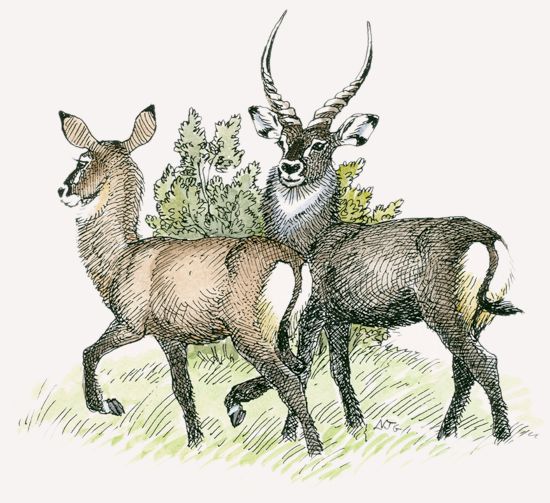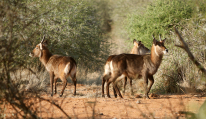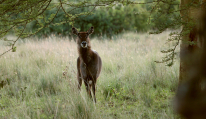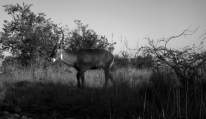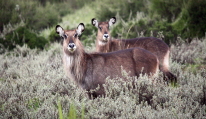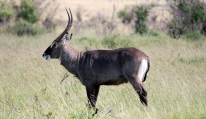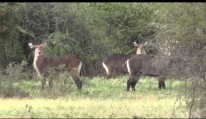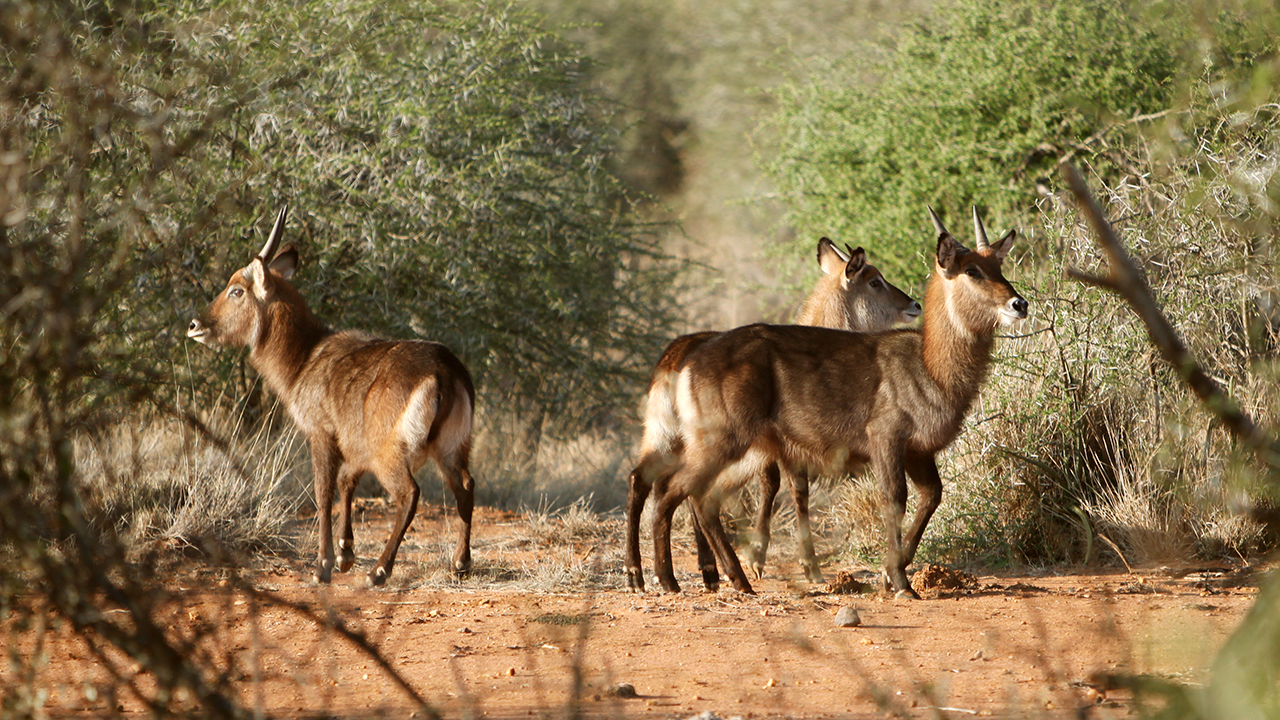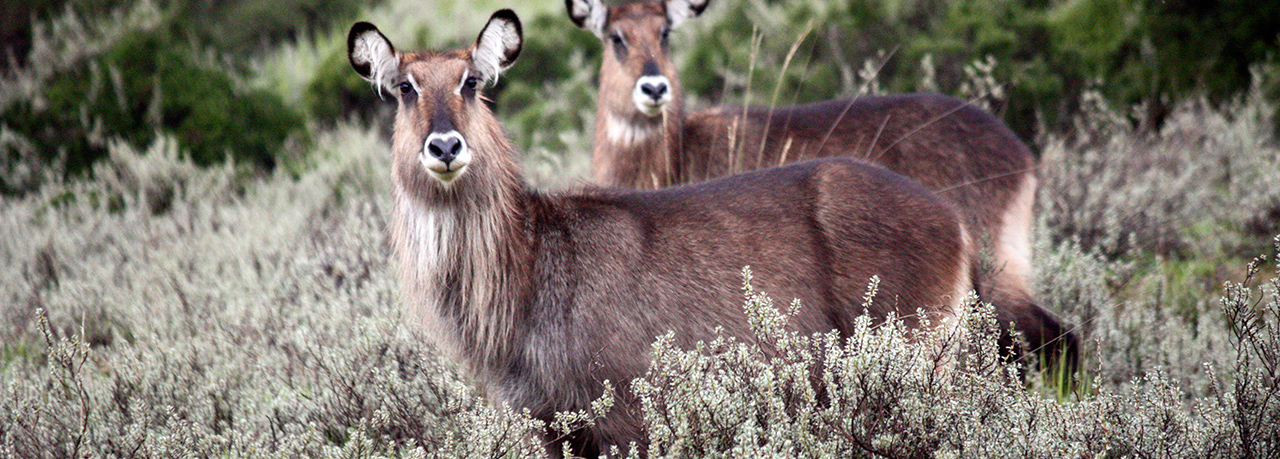Social Structure
Female waterbucks maintain large, often overlapping home ranges. Males live within these ranges, although they have a rather complicated social structure. A territorial male protects his own area within a female’s range, forcing out sub-adult males that don’t submit to him. Bachelor herds are made up of males from within a female’s home range; males from other ranges are not accepted. Young females that are driven away from their mother’s home range form spinster groups. A female stays in this group until she can establish her own home range and find a territorial male for a mate. This can take up to four years. Within all bachelor groups, males spar and compete to display their dominance. Territorial males mark their boundaries through their physical presence and strong body odor rather than with dung or urine. A male generally retains his territory for about five years. Because a large territory is important for securing more and longer visits by females, territorial males continually fight for bigger areas. The largest are obtained when these males are in their prime (between the ages of six and nine years). Once a male is no longer territorial, he tends to lead a solitary life in a small area that he does not have to defend.
Communication
Except for calves, which make a bleating sound when they are frightened, waterbucks do not communicate vocally.
Behavior
Despite their name, waterbucks do not spend much time in the water. Instead, they spend most of the day and night on land, foraging and ruminating. They rest for about 20 percent of the day, but only four minutes is in heavy sleep (though these times differ somewhat depending on the season). When male waterbucks meet, they display a “proud” posture, which entails a stiffly arched neck and a rigid tail. When another adult male encounters this display, he either submits by lowering his head or the two fight. These fights can last up to 30 minutes, but deaths are rare.
Conservation
Because waterbucks enjoy grazing on cultivated crops and are rather sedentary in behavior, they are very vulnerable to poaching. Waterbuck populations are decreasing in half of the countries where they live. South Africa is the only place showing an increase. About half of the common waterbuck population lives in protected areas, but even in these regions, there is a 3.2 percent decrease on average every year.

